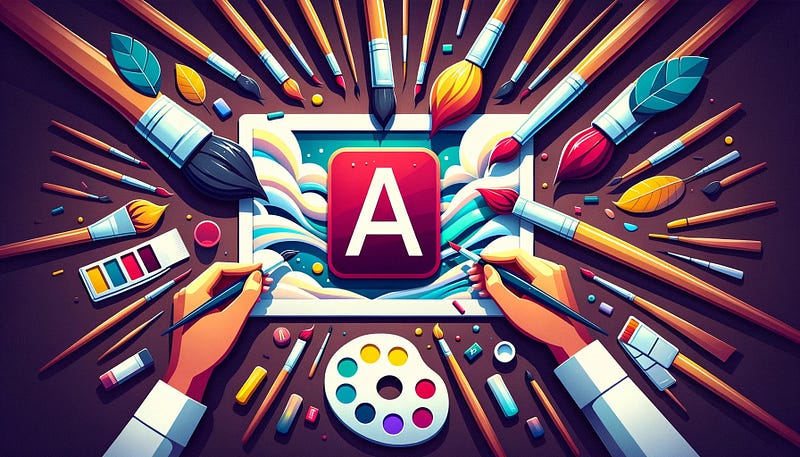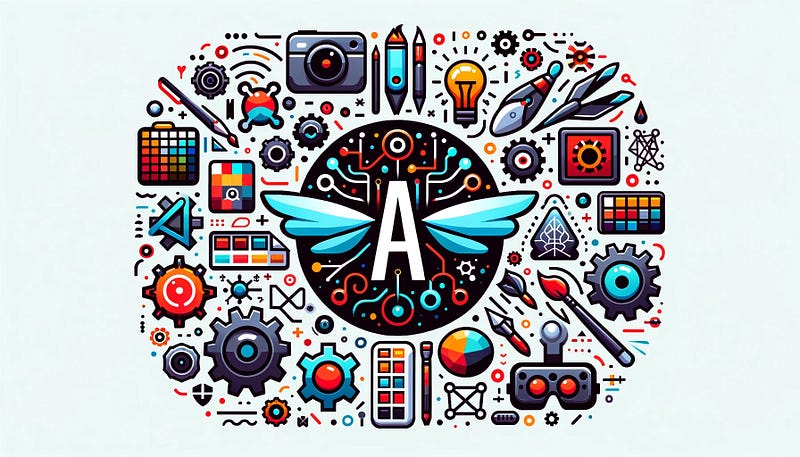Adobe’s Trail of Innovation: From Garage Dreams to AI-driven Democratization

On a dusk of 1982, the door of an old garage located in a quiet suburb of California slowly opened. From within, voices of passionate discussion could be heard.
In that garage, two young men named John Warnock and Charles Geschke were surrounded by countless papers, pens, and computers, earnestly trial-and-erroring something.
There was a special sparkle in their eyes, reflecting the passion for new ideas, new technologies, and a new future. Dreaming of changing the future of digital art, they continued their research day and night.
This garage was not just any garage. It was the beginning of a new era of creativity and the birthplace of a massive empire named Adobe.
As the night deepened, the two finally got their hands on an idea that would forever change the world of design. From that moment, their dream became reality, and our creative world entered a new chapter.
Inception Spark: The Revolution from a Garage

In the early 1980s, the world of design and printing was facing a major challenge. It was very difficult to accurately reproduce on a computer the designs that designers drew by hand.
Technology to accurately reproduce fonts, colors, layouts, etc., down to the details was required.
At this time, John Warnock and Charles Geschke devised PostScript as a solution to this problem.
PostScript, as a page description language, translated design into mathematical instructions, converting them into a language that printers could understand. This allowed designers to accurately reproduce designs on computers and printers.
Before their advent, designers would take hand-drawn designs to professional printers, spending a lot of time and effort to reflect the designs in print.
However, with the advent of PostScript, designers could complete their designs on their PCs and print them in the same quality.
This technological revolution not only affected the world of design but also had a significant impact on the publishing industry. Magazines, newspapers, books, and many other printed materials could now be produced faster and at a lower cost.
Behind this transformation were the passion and vision of Warnock and Geschke.
They understood the importance of making creative expression more free and easier. And, that dream became a reality with the advent of PostScript.
New Era of Digital Art: The Infinite Possibilities Brought by Software

Over time, the means of artistic expression have changed significantly.
Among them, the evolution of digital technology could be said to be one of the greatest changes in the creative field.
Artists of the past were limited to pure manual expression. They held brushes and poured passion onto canvases to create works.
However, the advent of revolutionary software like Photoshop and Illustrator brought a new wind to the art world.
These tools provided new freedom of expression for designers and artists. The limits of imagination could be realized through the power of software.
It became possible to adjust colors, shapes, and textures down to the finest details, giving birth to delicate art never seen before.
And the impact is spreading. The advancement of CG technology in movies, animation, and the gaming industry, the innovation in advertising and web design; behind all of these lies the presence of these revolutionary tools.
Through these tools, we can rediscover the beauty, emotion, and surprise that lurk in our daily lives.
Furthermore, these digital tools play a significant role in education. They are being incorporated into school curricula to help children shape their ideas and emotions.
In this way, Photoshop and Illustrator are more than just software; they are deeply rooted in our lives and culture. This digital wave will continue to spread, exploring new possibilities of expression. We are witnessing this transformation.
Pioneers of the Cloud

The moment has come when Adobe, once again, brings about a groundbreaking change in the digital design scene. It was a bold attempt to fully migrate creative tools to the cloud.
Previously, designers and artists had to rely on specific computers or devices to work. Moving and sharing data often took time, and flexible collaboration was difficult. However, Adobe’s transition to the cloud fundamentally changed these concepts.
Suddenly, creators could access data on the cloud from anywhere in the world. The days of depending on heavy external hard drives or specific workstations ended, opening the doors to a new, free, and dynamic working style.
This innovative attempt by Adobe was also a challenge to the industry. Transitioning to the cloud was more than just a technological evolution; it changed the way design was thought about, how teams worked, and even the lifestyles of creators.
This transition had a revolutionary impact on the design industry. As many creators explored new possibilities and evolved accordingly, Adobe continued to play its pioneering role.
Democratization of Creativity: Expanding Possibilities through AI

While the flames of revolution are still burning, Adobe is quietly paving the way for innovation, looking ahead to what’s next.
As new waves of technology rush in, Adobe is not missing out on these waves, always cutting through the waves at the forefront. After cloud technology emerged and brought significant change to the industry, now AI (Artificial Intelligence) and VR (Virtual Reality) technologies are covering the entire horizon.
With the foundation of the industry built by the cloud, now AI and VR powers are providing a stage to unleash new possibilities of creation.
At the dawn of this new technological era, Adobe released an amazing new product called 「Adobe Firefly」.
This product was more than just an update or a small evolution; it indicated a major turning point in the design industry.
Putting the power of AI at the forefront, Adobe Firefly blurred the boundary between general illustrators and professional illustrators, much like morning fog clearing away.

This is actually something I made with Adobe Firefly.
Complex tasks that once required professional skills or years of experience have now become attainable with the power of Adobe Firefly.
This is indeed the release of creative power to more people, signaling the dawn of a new era.
Adobe Firefly removed the technological barriers that existed until now, paving a new way for everyone to enjoy creative expression freely.
And this innovative attempt by Adobe embodies the fusion of technology and art. Through this, Adobe can show a new path to the next generation of creators, continually leading the future of the creative industry.
However, Adobe’s challenge doesn’t stop here. Adobe announced that it would provide compensation for copyright litigation to large enterprise users of Firefly.
This move emphasizes Adobe’s trust in legal data sources as copyright litigation over images generated by AI increases.
Moreover, Firefly is positioned as a commercially viable means of image creation and editing through AI, providing handling of legal claims related to generative AI copyright issues for enterprise product users.
Conclusion

These innovative moves show new possibilities to all of us.
Once, drawing illustrations was a professional domain, and many people felt they lacked the talent or skill. However, now is the time to shed such misconceptions.
While creating a perfect 100-point work may require specialized knowledge, creating 90-point advertisements, book covers, logos, etc., is now possible for anyone. Through the power of AI, the democratization of creativity is underway, opening new paths for all of us.
To reveal the truth at the end, all the images inserted in this text were created by me thinking of the prompts and using Adobe Firefly.
The times have truly come this far.
Finally, I’m aiming for 10,000 followers, so if you like the article, it will be very encouraging if you can follow me, comment, clap, etc.
Thank you from the bottom of my heart for your support.

